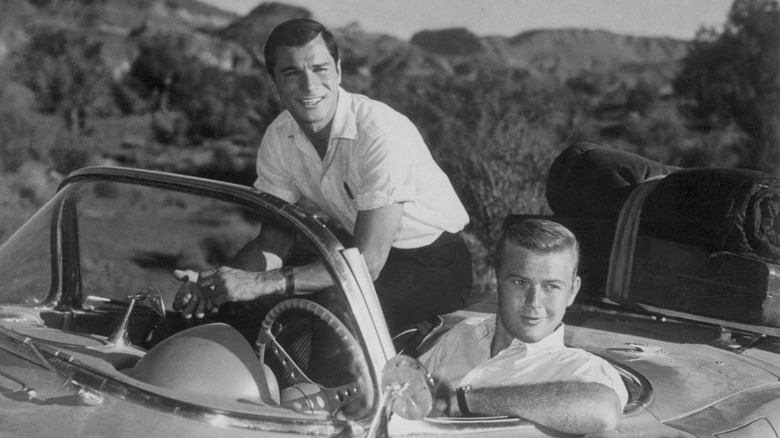
George Maharis with Martin Milner in “Route 66.”

By Megan McKinney
A major perk of my long-ago job in CBS-TV’s New York Press Department was to be in the frequent presence of men who were paid immense amounts of money primarily because they were attractive to women. Among them Clint Eastwood, Steve McQueen and my best buddy of all, George Maharis.
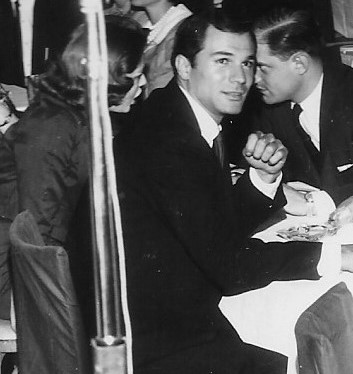
Ringside with George and a CBS colleague, Ken Donnellan, in a New York club. George is politely listening to the musicians, while Ken and I are in a heated business conversation.
George showed up repeatedly at our 4th Floor department during the summer before production for “Route 66” began; it was a time in which he and I became great friends. He also fitted in perfectly with my work in publicizing the show; he appealed to fans and had a great “story” as one of seven children of an impoverished Greek immigrant couple. When I asked him for childhood snapshots to illustrate an article, he told me—without embarrassment or self-pity—that his family had been too poor to afford a camera or film. In fact, he was so comfortable with tenement life that he was still living in a Hell’s Kitchen walkup at 543 West 49th Street while starring in “Route 66.”
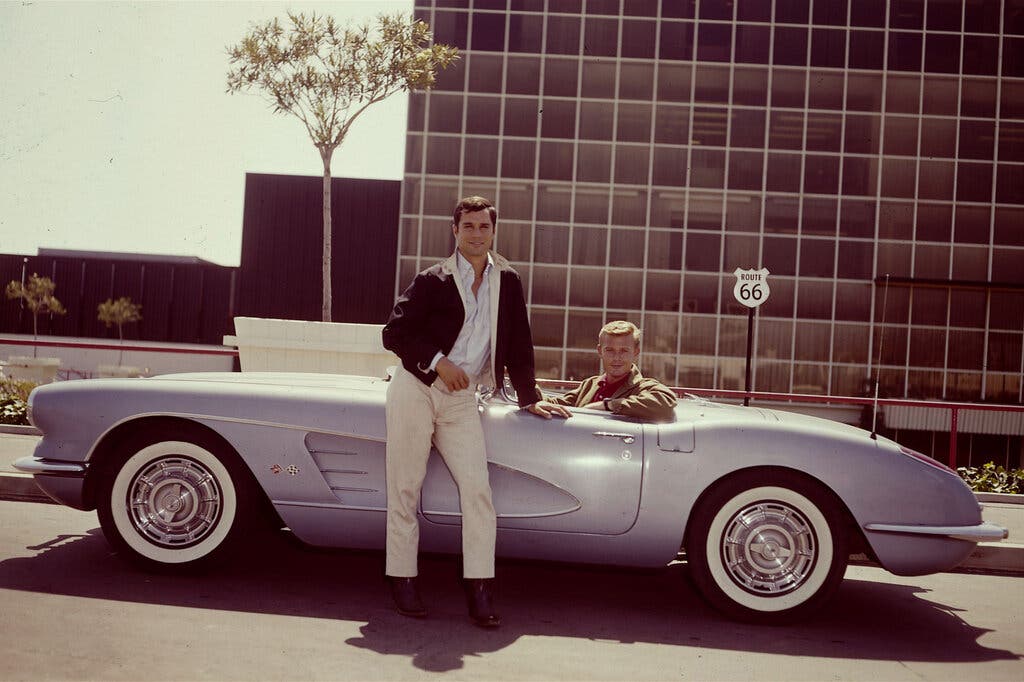
General Motors presented both George and Marty with Corvettes of their own. Dinah Shore, who was starring in another Chevy sponsored show, was also a recipient. Nice perks.
George was immensely talented and a product of Actors Studio, Sanford Meisner and Lee Strasberg, with a strong Off-Broadway resume when he came to us.
He was reportedly somewhat older than he looked. Was he ever!
I was stunned to read when he died last week that he was 94. He looked great in the CBS days, and appears to have continued to do so—for a very good reason. George was extremely particular about what he took into his system. He and I whiled away many an afternoon that summer sipping fresh carrot juice in a health food bar in the Times Square area—no unhealthy alcohol or smokey barroom air for Mr. Maharis. (The earlier photo was an exception.)
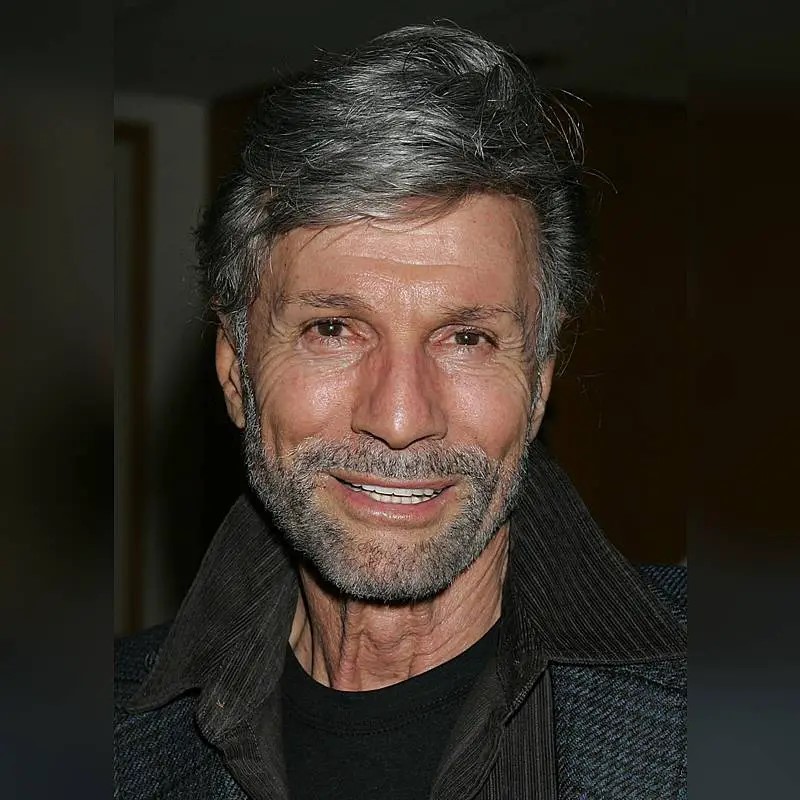
This is as old as George ever looked.
When he and Marty hit the road, George did not leave my life. I began receiving letters written in various hotels and tourist cabins along Route 66 complaining about mosquitoes, errant directors, the heat, the cold, the wet, the water supply. In addition, he telephoned almost every weekend with even more complaints. But he did it with such charm.
He always called the CBS switchboard and asked the operator to put the call through to my apartment. She would telephone me and ask if I would accept a call without saying who was on the line (although we both knew). I would then hear the unmistakable voice of Cary Grant, Robert Mitchum, Jimmy Stewart, or John Wayne—George could do them all.
One Saturday morning the telephone rang at the usual time and the operator’s voice asked as always if I would take a call. After I said yes, a voice with an Asian accent apologized for not returning my call of the previous day. He would be delighted to take me and a guest to dinner at ”21” any night during the following week.
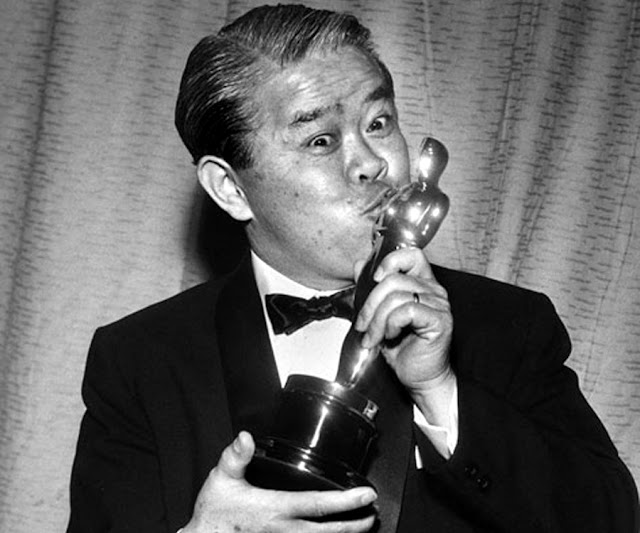
Jimmy Wong Howe
“Please George,” I said, “ What is it? I’m busy.”
“Oh, Miss McKinney,” came back the horrified response. “I thought you needed to spend an hour or so with me while I was in New York.”
Good heavens! Those were precisely the words I had used in a message I’d left for James Wong Howe. The legendary cinematographer had no connection with CBS; however, a writer friend, the Hollywood Reporter correspondent George Christy, wanted to interview him but didn’t know him and asked me to set it up.

George Christy
I didn’t know him either; however, setting up interviews was my job—so I pitched in. And from then on I treated George Maharis’ calls with great respect.
Author photo: Robert F. Carl







